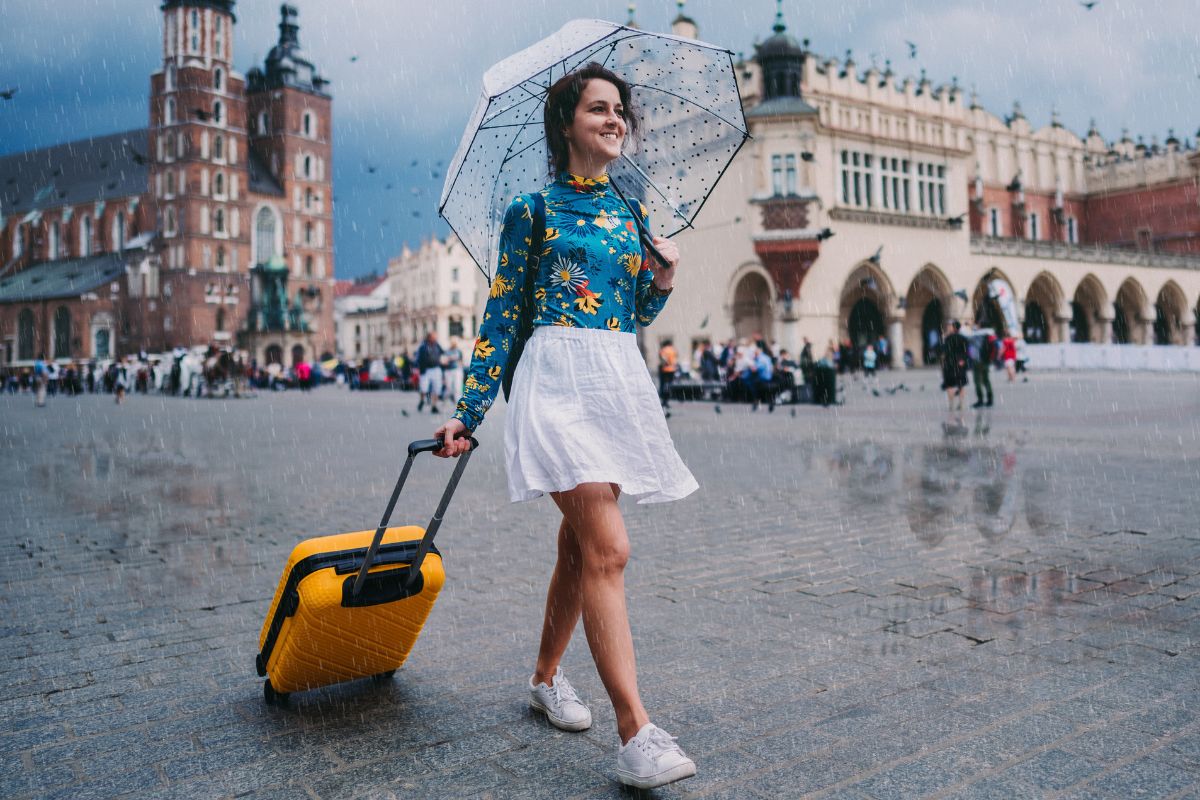How to Make Friends While Traveling Solo

Solo travel doesn’t have to be lonely. In fact, many solo travelers find that being on their own makes them more approachable and open to meeting people. As one travel blogger observes, “with the right approach, solo travel is a social experience.” By choosing social activities and keeping an open, curious mindset, you can turn your journey into an opportunity for lasting friendships.
Meeting Fellow Travelers
-
Stay in social accommodations. Hostels, guesthouses and small B&Bs are natural hubs for solo travelers. Hang out in communal areas like lounges, kitchens or bars—”the best way to start to find your community is to hang out in the hostel’s common areas”. Join any hostel events (pub crawls, game nights, group dinners) to mingle. Even sharing breakfast or cooking at the hostel can spark conversation: one guest recalls playing card games with other travelers from five different countries into the night.
-
Join group tours and classes. Free walking tours and group excursions are ideal for meeting people. On a rainy walking tour in Paris, a traveler met a fellow solo tourist and they ended up grabbing lunch together. Likewise, signing up for a cooking class, dance lesson or art workshop connects you with others sharing your interests. For example, a Barcelona cooking class brought solo travelers together around the kitchen table – “taking a cooking class is a great option for solo travelers” and afterward they dined “with your newfound friends.”
-
Use traveler apps and websites. Take advantage of social travel platforms. Hostel booking apps (e.g. Hostelworld’s app) let you chat with people staying in the same hostel before you arrive. Dedicated meet-up apps connect travelers too. For example, Backpackr matches backpackers headed to the same area, and platforms like Couchsurfing and Meetup have features for meeting up in real time. Couchsurfing’s “Hangouts” tab lets you find nearby travelers or locals for coffee, city walks or events. Likewise, Meetup.com has countless local groups – from wine tastings in France to hiking clubs in Asia – so you can join an activity and meet people who share your hobbies.
-
Frequent social hubs. Coffee shops, hostels bars, park plazas or coworking spaces (for digital nomads) are great places to strike up conversations. If you’re a digital nomad, co-working spaces double as networking spots—”you’ll “automatically have a lot in common” with people there. Even traveling by bus or train can pay off: chatting with seatmates has led some travelers to form friendships on the road.
Connecting with Locals
-
Couchsurfing and homestays. Staying with a local host (or even just connecting through the app) immerses you in community life. Couchsurfing isn’t just a free stay – as one guide notes, it remains “one of the best ways to connect with locals, get off the main tourist path, [and] make new friends”. Even if you don’t sleep on a stranger’s couch, use the app to find local meetups or invite a host out for coffee. Local hosts often love showing newcomers around, and a traveler on a Couchsurfing meetup in Denmark ended up being invited to a local family’s weekly dinner.
-
Meetup.com and community events. Use Meetup or similar sites to find events led by locals. For instance, you might “try salsa dancing in Lisbon or go hiking in Medellín” by joining a Meetup group. Cultural or hobby groups (wine clubs, book clubs, sports leagues) attract both expats and local enthusiasts. These shared interests break the ice.
-
Language exchanges and clubs. Many cities host language “conversation cafes” or exchange events. These gatherings are full of locals eager to practice English (or your language) and travelers wanting to learn the local tongue. Attending a language exchange helps you “connect with people who live in the destination” and pick up insider tips. Even joining a local sports team, dance class, or church/social group is a way to meet locals beyond the tourist scene.
-
Local hangouts and festivals. Ask around for the neighborhood spots where locals gather (neighborhood cafés, parks, markets). Spending time there lets you strike up casual chats. Also look for local festivals, street fairs or community events. These settings invite camaraderie; for example, joining a public holiday celebration or neighborhood block party can turn into a bonding experience. In Latin cultures, sharing a meal or attending a street festival is a common way to forge friendships.
-
Volunteer or work exchange. Immersive volunteer programs and work-trade sites (like Worldpackers or WWOOF) force close interaction with fellow volunteers and hosts. Working on a farm or helping in a hostel means living and problem-solving together – ideal for forming friendships. Many travelers find that friends made during volunteering trips last long after the project ends.
Useful Platforms and Events
-
Couchsurfing (with Hangouts). Beyond hosting, use CS’s social features. Its Hangouts page shows locals and travelers nearby who are free to meet.
-
Meetup.com. For slow-paced travel or longer stays, Meetup is invaluable. Search by interest or location to find events like language exchanges, book clubs, hiking groups, cooking workshops, bar crawls, and more.
-
Hostel and travel apps. The Hostelworld app (for example) lets you join chat groups for your hostel or destination. Apps like Travello, Backpackr, and GAFFL connect travelers for joint trips or meetups. Even Tinder/Bumble have “BFF” modes for finding platonic friends locally.
-
Guided walking tours. Many cities offer free or low-cost walking tours. These tours fill up with solo travelers and small groups, creating instant opportunities to connect. A simple “Where are you from?” on a tour can lead to shared sightseeing after the tour.
-
Cooking and cultural classes. Shared classes are natural bonding experiences. A cooking class not only teaches you local cuisine but usually ends with everyone sitting down together to eat – turning classmates into “new-found friends”. Cultural workshops (pottery, dance, language, meditation) likewise put you in touch with locals and travelers.
-
Local guided tours and groups. Look for niche tours led by locals: food tours, photography walks, or bar crawls run by local guides. These attract a mix of curious travelers and residents, all gathered for fun.
Adopt an Open, Approachable Attitude
-
Be approachable: Smile and keep relaxed body language. Avoid staring at your phone or wearing headphones all the time, which signal “do not disturb”. Look up and around; a simple grin invites conversation.
-
Ask questions: A friendly opener like “Where are you from?” or “How long have you been here?” is often all it takes. Travelers and locals alike expect casual questions. Once conversation starts, listen actively and show genuine curiosity about the other person. One blogger advises staying “curious and remain a ‘student’” about others’ lives – you never know who’s an ex-pat, a chef, or a fellow adventurer until you ask.
-
Say yes (safely): Leave room for spontaneity. If a fellow traveler invites you to join their plans, consider accepting – it could lead to a new experience and friendship. As one travel writer notes, “people are more kind and welcoming than we might fear,” so be optimistic when striking up conversations. Of course, always meet new acquaintances in public places and stay aware of safety.
-
Embrace cultural curiosity: Try learning a few local phrases; even limited language skills go a long way and locals usually appreciate the effort. Be respectful of local customs (observe whether people hug or bow when greeting, know basic etiquette). Showing interest in someone’s culture – for instance, asking about traditions or favorite local foods – builds rapport.
-
Share your plans: Letting new acquaintances know your itinerary can encourage invitations. In hostels or on tours, casually mention your next destination or day-trip plan – fellow travelers might join you or tip you off to hidden gems.
Tailoring Your Approach to Your Travel Style
-
Backpackers: You’ll often stay in hostels and use budget transport. This is a built-in social scene – join hostel bar nights, packet bus tours, or dorm room chit-chat. Couchsurfing is popular among backpackers for cultural immersion and cheap stays. Consider traveling in segments (e.g. a few days in a hostel, then sharing a tour bus) to maximize social time.
-
Digital Nomads: With more time in one place, tap into local work communities. Go to coworking meetups or tech events. Join digital nomad Facebook or Slack groups in your city. Since you might stay weeks or months in one spot, attend weekly social events (like language cafés or coworking happy hours). Staying in coliving spaces or Airbnbs for remote workers can also foster friendships through shared chores or outings.
-
Leisure Tourists: Even if you prefer comfort travel (hotels, cruises, resort packages), look for social options. Book small-group day tours, or sign up for hotel-organized excursions rather than solo sightseeing. Many resorts have group activities (wine nights, group hikes). Choosing locally-run inns or B&Bs over chain hotels can also help you meet fellow guests. In cities, consider joining an organized group walking tour or a cooking class geared toward travelers. These structured activities ensure you’re seated or paired with others, sparking conversation.
Every destination and personality is different, but the key ingredients are the same: put yourself in social settings, use the right tools (online or in-person), and be genuinely open to connecting. Hostels, community tours, apps, and local gatherings all make it easier to find fellow adventurers and friendly locals. By smiling, being curious, and saying “yes” to new opportunities, your solo trip can turn into a world of new friendships.






